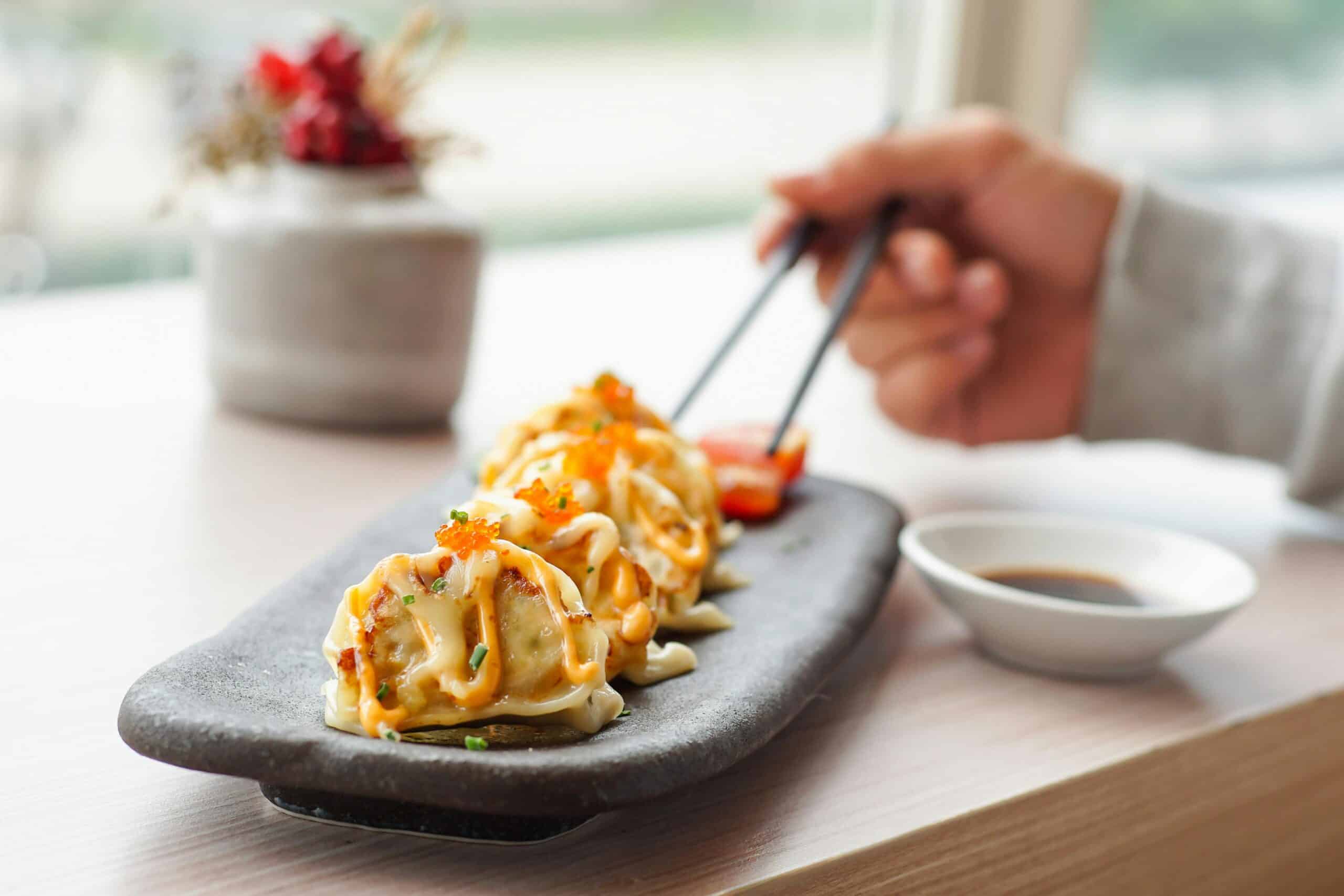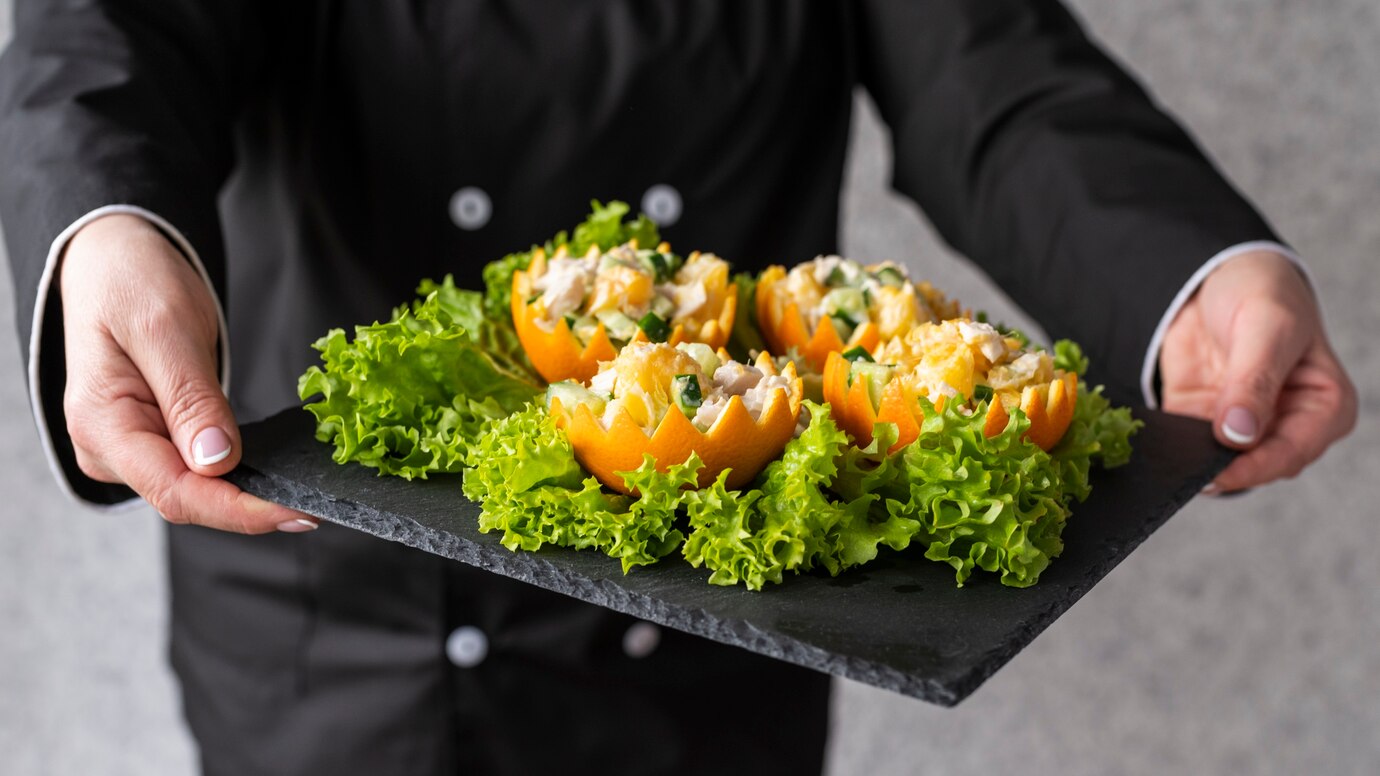
How to Plate Your Food Like a Professional Chef
In the culinary world, presentation dances hand in hand with taste. Plating like a pro is key. It helps impress guests, launch a food venture, or elevate home cooking. A well-arranged dish looks great. It also stirs the appetite and changes the dining experience.
Studies reveal that eye-catching food tastes even better, making plating a vital ingredient. This guide helps you master food presentation. It’s full of tips and techniques to make your dishes shine.
Pro Tip from Experts: Arrange items in odd numbers. This creates a more natural and pleasing look.
Quick Guide to Professional Plating
- Choose the right plate (size, shape, and colour matter).
- Apply the rule of thirds (strategically place elements).
- Layer textures and build height (avoid flat, unappealing arrangements).
- Use vibrant and contrasting colours (make your dish visually stunning).
- Garnish wisely (keep it edible and relevant to the dish).
- Keep your plate clean (presentation should be flawless).
- Leave negative space (avoid overcrowding for a refined look).
Important Consideration: Serve cold dishes on cold plates and hot dishes on warm plates.
Core Concept: The Art and Science of Plating

Plating is more than just putting food on a plate. It involves balance, composition, and storytelling. Top chefs believe plating should create a sensory experience. It should also boost the dish’s flavour. Here are some key principles:
- Balance: Make sure every element works together for a pleasing look. No single part should be too strong or take over the others.
- Colours and textures: Use different colours and textures to make the dish look appealing. Bright ingredients naturally enhance the presentation.
- Proportion & Composition: Arrange food nicely. Keep portion sizes in check to prevent a plate that looks overcrowded or too empty.
- Focal Point: Direct the diner’s eye to the dish’s main component, such as the protein or centrepiece.
- Negative Space: Keep some areas of the plate empty. This prevents overcrowding and keeps it elegant. White space enhances sophistication.
Step-by-Step Guide to Professional Food Plating
1. Choose the Right Plate
- Choose a plate size that fits the portion. If it’s too big, the food will look sparse, and if it’s too small, it will seem crowded.
- Chefs love white plates because they make colours stand out. However, using coloured plates can create a nice contrast.
- Think about various plate shapes. Round plates offer a classic look, while square or asymmetrical plates give a modern feel.
2. Understand the Rule of Thirds
- Visually divide the plate into three sections and place the main elements accordingly.
- Avoid centring all components unless aiming for a symmetrical presentation.
- Off-centre plating creates a more natural, dynamic presentation that feels intentional.
3. Build Height and Layers
- Stack or layer components to create depth and visual interest.
- Use ring moulds, quenelles, or piping techniques for precise and elegant presentation.
- Avoid flat, uninspired plating by incorporating vertical elements like microgreens or crispy garnishes.
4. Play with Colour and Texture
- Incorporate a mix of vibrant and neutral colours to add visual intrigue.
- Contrasting textures (crispy with creamy, soft with crunchy) make dishes more engaging.
- Use bright ingredients like roasted beetroot, edible flowers, or saffron sauces to boost your presentation.
5. Sauce and Garnish with Purpose
- Use squeeze bottles, brushes, or spoons to create artistic sauce drizzles or swooshes.
- Fresh herbs, microgreens, and edible flowers add a nice touch. They should enhance the dish, not take over.
- Avoid drowning the plate in sauce—opt for elegant streaks, dots, or pools.
6. Pay Attention to Negative Space
- Leaving empty space on the plate enhances sophistication and prevents visual clutter.
- Place elements with space in between to avoid a messy look.
- Minimalist plating styles often look more refined and intentional.
7. Keep It Clean
- Use a clean towel or paper napkin to wipe away any smudges or spills before serving.
- Smudged plates instantly detract from the overall presentation.
- Attention to detail sets professional plating apart from amateur attempts.
Best Practices & Additional Insights

- Practice with Simpler Dishes First: Start with simple dishes first. Use basic plating techniques. Then, try more advanced styles as you gain confidence.
- Use the Right Tools: Offset spatulas, precision tweezers, and ring moulds give you great results.
- Stay Updated on Trends: Follow renowned chefs and restaurants for fresh inspiration.
- Consider Plate Colour Theory: Warm-toned foods pop against cool-toned plates and vice versa.
- Test Your Plating in Good Light: Bright lights can change colours, so check your dish in soft, natural light.
FAQs
1. How do I choose the right plate shape?
Pick a plate that matches your dish. Round plates are great for classic styles. Asymmetrical plates offer a modern touch.
2. Can I use non-edible garnishes?
No, all garnishes should be edible and enhance the dish’s flavour profile.
3. How can I make my plating look more artistic?
Try different sauce drizzles, layer your ingredients, and arrange them asymmetrically. This will make your dish look more appealing.
4. What are the best garnishes for plating?
Microgreens, fresh herbs, edible flowers, and citrus zest brighten the dish. They add colour and texture without overpowering it.
5. How can I prevent sauces from running?
Use thick sauces. Apply them with controlled techniques like dotting or swooshing with a spoon.
Conclusion: Elevate Your Dining Experience

Crafting a stunning plate is truly an art—requiring practice and precision. With a sprinkle of creativity and a pinch of patience, even simple meals can shine. Beautiful plating transforms every bite into a jubilant celebration. Whether for business or pleasure, it elevates your dining experience. First impressions linger long, and a well-dressed dish leaves a lasting mark. Embrace the challenge! Think like a chef, turning plating into playful artistry. Relish the joy of your culinary canvas!